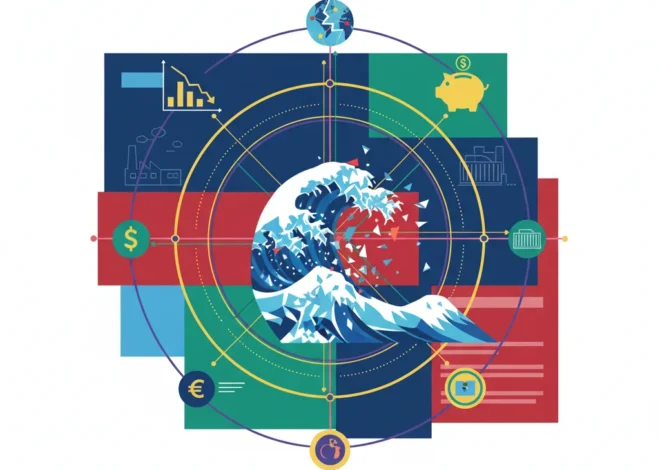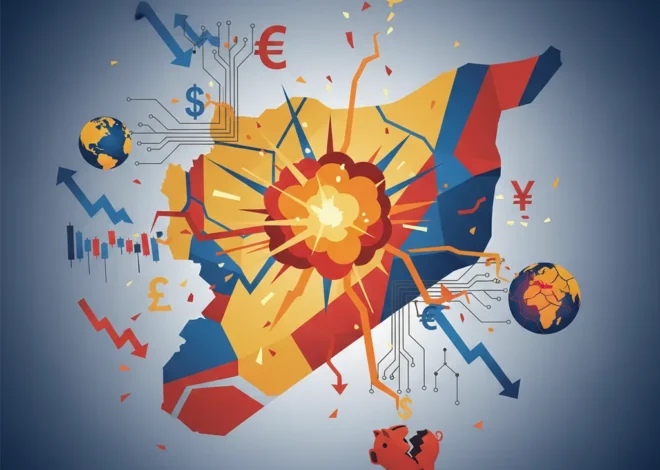
The Silent Unwinding: Why the Fed is Hitting the Brakes on Quantitative Tightening
In the intricate world of central banking, some of the most powerful moves are the quietest. For the past few years, the U.S. Federal Reserve has been silently shrinking its colossal balance sheet in a process known as Quantitative Tightening (QT). This financial diet, designed to curb inflation and normalize the economy, is now showing signs of strain. The Fed is on the verge of a major policy debate: when and how to end this great unwinding. This decision will have profound implications for the banking system, the stock market, and every investor’s portfolio.
This isn’t just a technical adjustment; it’s a pivotal moment in modern economics. To understand why, we need to delve into what QT is, why it’s causing stress, and what its conclusion means for the future of finance.
The Great Financial Reversal: From QE to QT
To grasp the significance of Quantitative Tightening, we must first look at its more famous sibling, Quantitative Easing (QE). Following the 2008 financial crisis and again during the COVID-19 pandemic, the Federal Reserve engaged in massive QE programs. It bought trillions of dollars in government bonds and mortgage-backed securities, pumping liquidity directly into the financial system. This was done to lower long-term interest rates, encourage borrowing and investing, and stabilize a panicked economy.
The result was a Fed balance sheet that swelled to a staggering nearly $9 trillion. However, as inflation surged to 40-year highs in 2022, the Fed had to reverse course. It began raising interest rates aggressively and initiated QT—the opposite of QE.
Under QT, the Fed doesn’t actively sell its bonds. Instead, it simply lets a set amount of them mature each month without reinvesting the proceeds. This process effectively pulls money out of the financial system, reducing liquidity and tightening financial conditions. The goal was to help tame inflation without causing a major market disruption. For a while, it worked quietly in the background. But now, the silence is being broken by warning bells from the very plumbing of the financial system.
The Budapest Gambit: How a Potential Trump-Putin Summit Could Reshape Global Markets
Cracks in the Plumbing: Stress in the Money Markets
The core reason the Fed is reconsidering its QT stance is mounting stress in the “money markets.” This isn’t a market where you buy and sell currency; it’s the critical, behind-the-scenes system where banks and financial institutions lend to each other for very short periods, often just overnight. This is essential for the daily functioning of the entire banking apparatus.
A key part of this system is the repurchase agreement, or “repo,” market. In this market, a bank can borrow cash overnight by putting up high-quality collateral, like Treasury bonds. The interest rate on these loans is a crucial indicator of the system’s health. When there’s plenty of cash (reserves) in the banking system, this rate is stable. But when cash becomes scarce, the rate can spike violently.
QT directly reduces bank reserves. As the Fed’s balance sheet shrinks, so does the amount of cash available for banks to lend to each other. We are now seeing signs that these reserves are approaching a level of scarcity. According to the Financial Times, officials are closely watching key rates, such as the Secured Overnight Financing Rate (SOFR), for signs of unusual volatility. A sudden, sharp increase in rates like SOFR would indicate that banks are struggling to find the cash they need, a dangerous signal for financial stability.
This isn’t a theoretical concern. In September 2019, the repo market seized up, sending overnight rates soaring and forcing the Fed to intervene by injecting billions of dollars back into the system. The central bank is determined to avoid a repeat of that episode, which is why the debate on ending QT is now front and center.
Below is a simplified comparison of a healthy versus a stressed money market environment, illustrating the effects of ample versus scarce reserves.
| Indicator | Healthy Market (Ample Reserves) | Stressed Market (Scarce Reserves) |
|---|---|---|
| Overnight Lending Rates (e.g., SOFR) | Stable and predictable, trading within the Fed’s target range. | Volatile and prone to sharp, unexpected spikes. |
| Bank Behavior | Banks lend freely to one another, confident in liquidity. | Banks begin to hoard cash, hesitant to lend, causing a liquidity crunch. |
| System Liquidity | High; cash flows smoothly through the financial system’s “plumbing.” | Low; blockages appear, and the flow of money becomes constricted. |
| Fed Posture | Can continue with its stated policy (like QT) without issue. | Forced to consider intervention to add liquidity and prevent a crisis. |
The Path Forward: How the Fed Might Wind Down QT
With the debate set to begin, the Federal Open Market Committee (FOMC) has a few options for engineering a soft landing for its balance sheet.
1. Slowing the Pace (Tapering)
The most likely first step is to slow down the pace of the runoff. Currently, the Fed is letting up to $60 billion in Treasuries and $35 billion in mortgage-backed securities mature each month. It could reduce these caps—for example, to $30 billion and $17.5 billion, respectively. This would act as a gradual easing of the brakes, allowing the market more time to adjust to lower levels of reserves.
2. Stopping Altogether
Eventually, the Fed will halt the process entirely. The key question is at what level of bank reserves they will stop. Fed officials want to maintain a system of “ample reserves,” meaning there is enough cash in the system to prevent sharp rate spikes but not so much that it negates their control over short-term interest rates. Finding this “Goldilocks” level is more of an art than a science, and they will be heavily reliant on real-time data from money markets to make the call.
3. Adjusting the Composition
Longer-term, the Fed has expressed a desire to return to a balance sheet that consists primarily of Treasury securities. This means that even after QT ends, they may continue to let mortgage-backed securities run off and replace them by purchasing Treasuries, a move that would be neutral for the overall size of the balance sheet but would change its composition.
The minutes from upcoming FOMC meetings will be scrutinized by everyone in the trading and investing world for clues about which path they will take and the timeline they envision. The consensus is building that a formal announcement about the plan could come as early as the spring of 2024 (source).
Titans, Trends, and Troubles: AI Warnings, Luxury Resets, and Banking's Billion-Dollar Ghost
What the End of QT Means for You and Your Investments
While the mechanics of QT are complex, the implications for investors and the broader economy are more straightforward. The end of the Fed’s balance sheet reduction is a significant dovish pivot, signaling that the most aggressive phase of monetary tightening is firmly in the past.
- For the Stock Market: Historically, increased liquidity is a tailwind for equities. The end of QT removes a source of tightening and can be interpreted as a green light for risk assets. It suggests the Fed is shifting its focus from pure inflation-fighting to balancing growth and stability, which is generally positive for corporate earnings and investor sentiment.
- For the Bond Market: With the Fed no longer stepping away as a major holder of Treasuries, the supply-demand dynamic shifts. Less net supply of bonds hitting the market can lead to higher bond prices and lower yields, all else being equal. This could make fixed-income investments more attractive.
- For the Banking and Financial Sector: A more stable and predictable liquidity environment is a clear positive for banks. It reduces the risk of funding stress and allows for smoother operations, which is crucial for the health of the entire financial ecosystem.
- For Fintech and Blockchain: The impact here is nuanced. A more stable traditional finance system might seem to reduce the need for decentralized alternatives. However, an environment where the central bank is no longer actively draining liquidity is generally more supportive of innovation and risk-taking. Lower interest rates and ample liquidity often fuel venture capital and investment in emerging sectors, including financial technology and even speculative assets within the blockchain space.
The Silver Surge: Why This "Other" Precious Metal is Reclaiming Its Throne
Conclusion: A New Chapter in Monetary Policy
The impending end of Quantitative Tightening marks the closing of an extraordinary chapter in the history of the Federal Reserve. It represents a shift from an emergency-era battle against inflation back toward a more traditional role of managing economic stability. The subtle tremors in the money markets have served as a crucial warning, reminding policymakers that the financial system’s plumbing is fragile and requires careful maintenance.
For business leaders, investors, and anyone interested in the future of our economy, this is a development to watch closely. The Fed’s next moves will not only dictate the availability of credit and the direction of interest rates but will also set the tone for market confidence and risk appetite for years to come. The era of the great unwinding is drawing to a close, and the implications of this quiet pivot will be anything but silent.


